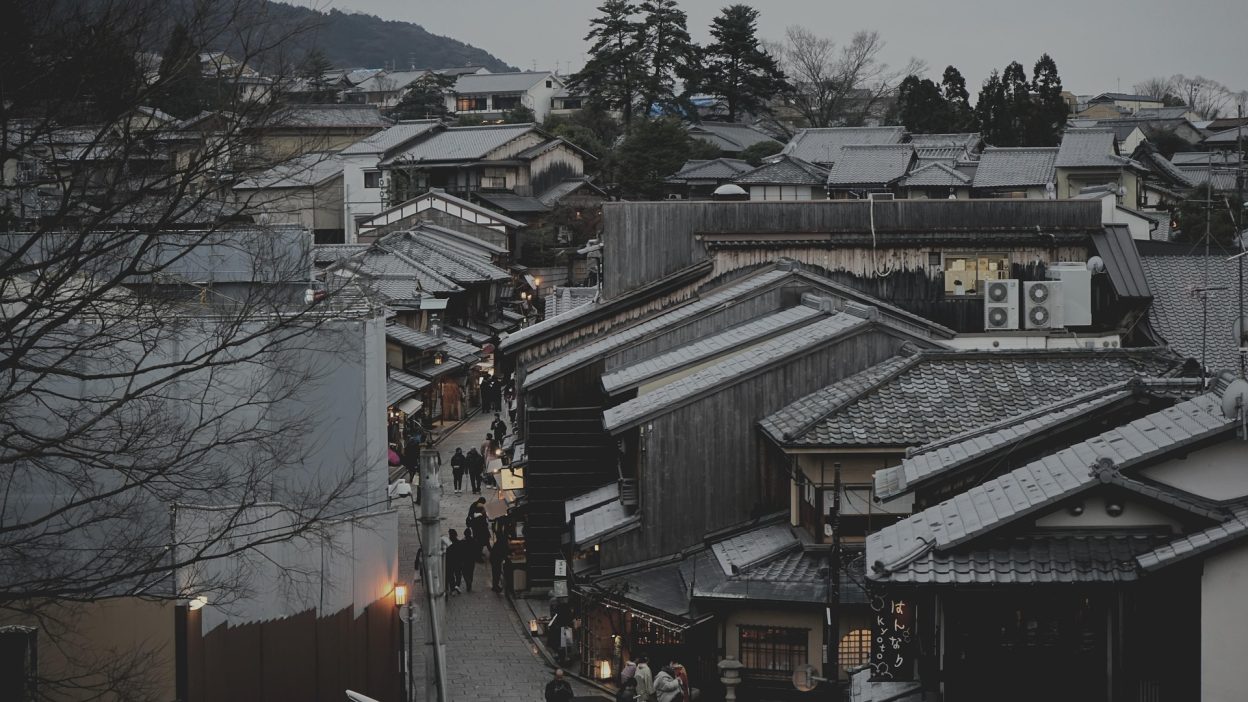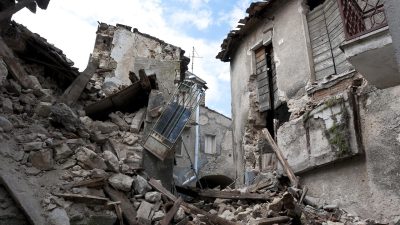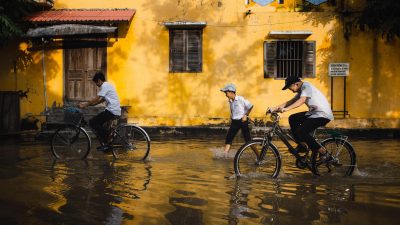When Japan Faced The Wrath Of Nature
1. A Catastrophe That Shook the World: The 2011 Tōhoku Disaster
The 2011 Tōhoku earthquake and tsunami was one of the deadliest natural disasters in recorded history. Striking Japan on 11th March 2011, this magnitude 9.1 earthquake triggered a catastrophic tsunami, leaving devastation on an unimaginable scale. Coastal towns were obliterated, thousands of lives were lost, and the disaster set off a nuclear crisis that continues to have consequences today. But what made this disaster so deadly, and why was Japan—a country well-prepared for earthquakes—so overwhelmed?
2. The Earthquake: A Mega-Quake Like No Other
At exactly 14:46 JST, a massive undersea megathrust earthquake struck off the coast of Japan’s Tōhoku region, approximately 70 km (43 mi) east of the Oshika Peninsula. This quake, occurring at a depth of 29 km (18 mi), was the most powerful ever recorded in Japan and the fourth most powerful earthquake in world history.
The quake was caused by the Pacific Plate subducting beneath the North American Plate, an area known for its seismic activity. The violent rupture released energy equivalent to 600 million times the atomic bomb dropped on Hiroshima, shaking buildings even in Tokyo, over 370 km (230 mi) away. But the worst was yet to come.
3. The Devastating Toll: Deaths, Injuries, and the Unimaginable Loss
- Death Toll: Official figures confirm that 15,899 people lost their lives, though thousands remain missing.
- Injuries: Over 6,000 people suffered injuries ranging from fractures to life-threatening wounds.
- Displacement: More than 470,000 people were forced to evacuate their homes, many of which were destroyed beyond repair.
- Property Damage: Over 1.2 million buildings were either severely damaged or completely destroyed.
- Economic Loss: Estimated at $235 billion, making it the most expensive natural disaster in world history.
- Tsunami Impact: The tsunami waves reached heights of 40.5 metres (133 ft) in some areas, engulfing entire cities within minutes.
4. The Tsunami: A Wall of Water That Erased Entire Towns
The true destruction came from the gigantic tsunami that followed within minutes. The earthquake shifted the seabed by 50 metres, displacing an enormous volume of water. In some places, waves surged as far as 10 km (6 mi) inland, swallowing everything in their path. The hardest-hit areas included Miyagi, Iwate, and Fukushima Prefectures, where entire towns were wiped off the map.
Japan’s sea walls, built to protect against tsunamis, proved inadequate as the waves easily breached them, submerging airports, train stations, and residential areas. Thousands of vehicles, houses, and even ships were carried inland by the force of the water, while fires broke out due to ruptured gas lines.
5. The Fukushima Nuclear Disaster: A Crisis Beyond Earthquake and Tsunami
Perhaps the most enduring consequence of the 2011 Tōhoku disaster was the Fukushima Daiichi nuclear meltdown. When the tsunami struck, the nuclear power plant’s cooling systems failed, leading to explosions and radiation leaks. Three of the reactors melted down, releasing radiation into the air, land, and ocean.
The disaster prompted the evacuation of over 150,000 residents, many of whom never returned due to high radiation levels. Even today, contaminated water continues to be a major issue, sparking global concerns over its disposal.
6. Economic Devastation: A Nation on Its Knees
The 2011 Tōhoku Earthquake and Tsunami left an unparalleled economic scar on Japan. The estimated damage surpassed $235 billion, making it the most expensive natural disaster in history. Entire cities were washed away, leaving thousands of businesses in ruins. The fishing and agricultural sectors were obliterated, crippling local economies. The destruction of Sendai Airport and key highways further paralysed Japan’s infrastructure.
The loss was not merely physical. The Tokyo Stock Exchange plummeted, and global supply chains suffered as major industries, including automobile and technology giants like Toyota, Sony, and Panasonic, faced production halts. Insurance firms struggled under the massive number of claims, leading to one of the biggest financial crises in the sector. The economic consequences rippled across the world, disrupting international trade and causing market instability.
7. The Environmental Fallout: A Toxic Legacy
- Nuclear Disaster: The Fukushima Daiichi Nuclear Power Plant suffered catastrophic meltdowns, releasing radioactive material into the air and water. The contamination led to large-scale evacuations, making vast areas uninhabitable for years.
- Marine Contamination: The tsunami washed enormous amounts of debris, chemicals, and radiation into the Pacific Ocean, severely affecting marine ecosystems. Fish populations declined, and radioactive contamination was detected as far as North America.
- Soil and Water Pollution: The destruction of factories and industrial facilities released toxic chemicals, oil spills, and hazardous waste into the land and rivers. Farming regions faced long-term contamination, rendering crops inedible.
- Air Pollution: The fires ignited by the earthquake sent thick clouds of smoke and hazardous pollutants into the atmosphere, affecting air quality.
8. Government Response: Swift Action or Systemic Failure?
The Japanese government’s response to the disaster was swift, yet heavily scrutinised. The Self-Defence Forces were deployed within hours, and international aid poured in. Emergency shelters were set up, and food, water, and medical aid were distributed to millions of displaced survivors.
However, the response was not without controversy. The Fukushima crisis was mishandled, with authorities accused of underreporting radiation risks. Conflicting information left the public confused and fearful. Bureaucratic delays also hindered aid distribution, leaving some areas stranded for days. The failure to properly address nuclear safety regulations before the disaster fuelled public outrage, leading to widespread protests against nuclear energy.
9. Long-Term Impact: A Changed Japan
More than a decade later, Japan still feels the aftershocks of the Tōhoku disaster. The country invested billions into rebuilding cities, homes, and infrastructure. Advanced seawalls were constructed along the coastline, and new emergency response systems were implemented to prevent such a disaster from happening again.
Yet, the psychological scars remain. Survivors continue to suffer from post-traumatic stress disorder (PTSD), and many have yet to return to their original homes due to radiation fears. The disaster also triggered a massive shift in Japan’s energy policy, leading to a decline in nuclear power reliance. However, debates about nuclear energy safety persist.
10. Lessons Learned: Can Such a Catastrophe Be Prevented Again?
The 2011 earthquake and tsunami taught Japan and the world invaluable lessons about disaster preparedness. Improved early warning systems, reinforced earthquake-resistant buildings, and heightened tsunami defences are now in place. Japan’s commitment to disaster resilience has set a global standard, with other countries adopting similar strategies.
However, nature’s unpredictability remains a threat. While Japan has made significant progress, the risk of another megaquake looms. The question remains: can Japan ever be fully prepared for the next seismic catastrophe?
FAQs
1. How many people died in the 2011 Tōhoku Earthquake and Tsunami?
Over 15,899 people lost their lives, with thousands more injured and 2,529 still missing.
2. What caused the Fukushima nuclear disaster?
The tsunami flooded the Fukushima Daiichi Nuclear Power Plant, leading to reactor meltdowns and the release of radioactive materials.
3. How did the earthquake impact Japan’s economy?
The disaster caused over $235 billion in damages, severely affecting industries, businesses, and international trade.
4. What measures has Japan taken to prevent future disasters?
Japan has built higher seawalls, earthquake-resistant buildings, and improved its early warning systems to minimise future damage.5. Is it safe to visit Fukushima today?
Many areas have been decontaminated and reopened, but some high-radiation zones remain uninhabitable.




